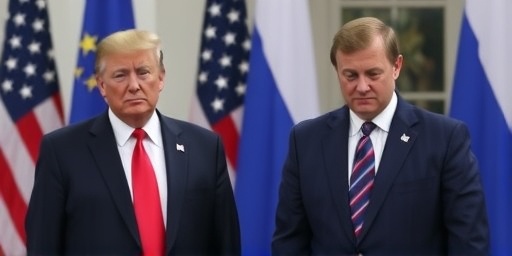In a stunning reversal that has shocked Washington, President Donald Trump‘s ambitious 28-point peace plan for Ukraine is under fire from both sides of the aisle, with critics accusing it of handing Moscow undue victories at Kyiv’s expense. Unveiled during a high-stakes press conference at the White House, the proposal aims to end the grinding conflict but has instead fueled accusations of undermining Ukraine’s hard-fought sovereignty.
The plan, which Trump touted as a ‘masterstroke for global stability,’ includes provisions that would recognize Russian control over Crimea and parts of the Donbas region, freeze military aid to Ukraine, and mandate neutral status for Kyiv—barring it from NATO membership. Lawmakers from Congress, traditionally divided on foreign policy, have united in rare bipartisan condemnation, warning that the deal echoes Putin’s long-standing demands and could embolden aggression elsewhere.
This backlash comes amid escalating tensions, as Russia’s invasion of Ukraine enters its third year, with over 500,000 casualties reported on both sides according to UN estimates. Trump‘s initiative, brokered through backchannel talks with Russian officials, represents a bold pivot from his administration’s earlier tough stance, but it’s drawing parallels to the controversial Minsk agreements of 2014 and 2015, which failed to halt the violence.
Breaking Down the 28 Points: What Trump Proposes for Ukraine
At the heart of the controversy is the intricate web of 28 specific commitments outlined in Trump’s peace plan. Delivered in a 50-page document leaked to major outlets like The New York Times and CNN, the blueprint seeks to redraw geopolitical lines in Eastern Europe. Key elements include immediate cessation of hostilities, monitored by a joint U.S.-Russia-Ukraine commission, and economic incentives for reconstruction funded partly by frozen Russian assets.
However, the most contentious aspects tilt heavily toward Russian interests. For instance, Point 7 explicitly acknowledges Russia’s annexation of Crimea as a ‘fait accompli,’ offering to lift certain sanctions in exchange for demilitarization along the Black Sea coast. Point 14 demands that Ukraine adopt constitutional amendments ensuring permanent neutrality, effectively sidelining its NATO aspirations—a red line for many in Kyiv.
Other provisions address humanitarian concerns, such as the safe return of over 19,000 Ukrainian children reportedly deported to Russia, per Human Rights Watch data. Yet, even these are overshadowed by clauses like Point 22, which would cap Ukraine’s military spending at 1.5% of GDP for a decade, a move critics say leaves the nation vulnerable to future incursions.
Trump defended the plan in a fiery Fox News interview, stating, ‘We’re ending a war that’s drained America’s treasure. Ukraine gets peace; Russia gets security guarantees. It’s a win-win.’ But experts like Fiona Hill, former National Security Council official, counter that it ‘reads like a wishlist from the Kremlin,’ potentially validating Vladimir Putin’s narrative of historical Russian claims over Ukrainian territory.
To illustrate the plan’s scope, here’s a breakdown of select points:
- Points 1-5: Ceasefire protocols, including withdrawal of heavy weaponry from front lines and establishment of a 30-km demilitarized zone.
- Points 6-10: Territorial adjustments, recognizing Russian-held areas in Luhansk and Donetsk as autonomous regions with veto power over foreign policy.
- Points 11-15: Security arrangements, prohibiting Ukrainian offensive capabilities and limiting alliances.
- Points 16-20: Economic rebuilding, with $100 billion in international aid pledged, though tied to Russian participation.
- Points 21-28: Long-term monitoring by the UN and OSCE, with penalties for violations including renewed sanctions.
This structure, while comprehensive, has been lambasted for its asymmetry, with Ukraine bearing the brunt of concessions while Russia faces minimal accountability for war crimes documented by the International Criminal Court.
Democrats Unleash Fury: ‘A Surrender to Putin’
Democratic leaders in Congress have been vocal and unrelenting in their opposition to Trump’s Ukraine peace plan, framing it as a dangerous capitulation that betrays America’s post-World War II commitment to democratic allies. Senate Majority Leader Chuck Schumer took to the floor of the Capitol, declaring, ‘This isn’t peace; it’s appeasement. Handing Crimea to Russia on a silver platter undermines everything we’ve fought for since 2022.’
House Speaker Nancy Pelosi echoed this sentiment in a joint statement with over 150 Democratic representatives, arguing that the plan ignores the $113 billion in U.S. aid already provided to Ukraine, much of it for defensive weapons like HIMARS systems that have turned the tide against Russian advances. ‘Congress has stood with Ukraine through blood and fire,’ Pelosi said. ‘We won’t let one man’s deal undo that solidarity.’
The criticism extends to specifics: Democrats highlight how Point 18, which proposes joint U.S.-Russia patrols in the Sea of Azov, could expose American personnel to risks without reciprocal benefits. Polling from Pew Research shows 68% of Democrats view the plan as favoring Russia, a stark contrast to broader public support for aiding Ukraine at 59%.
Progressive voices like Representative Alexandria Ocasio-Cortez have gone further, linking the proposal to Trump’s personal history with Putin. ‘This peace plan smells of the same deference we’ve seen in Helsinki summits,’ she tweeted, garnering over 2 million views. The Democratic pushback includes plans for a resolution to block implementation, requiring congressional approval under the War Powers Resolution.
International allies are aligning with this view; EU foreign policy chief Josep Borrell called the plan ‘unacceptable’ in Brussels, warning it could fracture NATO unity. With midterms looming, Democrats are leveraging the issue to rally their base, portraying Trump’s foreign policy as erratic and isolationist.
Surprising GOP Rebellion: Republicans Break Ranks on Ukraine Deal
In an unexpected twist, Trump’s own Republican Party is fracturing over the Ukraine peace plan, with hawkish conservatives decrying it as a sellout that weakens U.S. global standing. Senator Lindsey Graham, a longtime Trump ally, broke ranks during a CNN appearance, stating bluntly, ‘Mr. President, this plan gives Putin everything he wants without making him pay for the atrocities in Bucha and Mariupol. It’s not America First; it’s Russia First.’
This dissent is echoed in the House, where Republican Conference Chair Elise Stefanik introduced a bill demanding veto-proof sanctions on any Russian gains from the deal. ‘We’ve invested too much in Ukraine’s defense to watch it evaporate,’ Stefanik said in a press release. According to a recent Quinnipiac poll, 52% of Republicans now oppose the plan, up from 35% last month—a sign of growing unease within the GOP base.
Key flashpoints for Republicans include the plan’s neutrality clause, which they argue invites further Russian expansionism, reminiscent of the 1938 Munich Agreement. Senator Mitt Romney, in a scathing op-ed for The Atlantic, wrote, ‘Conceding territory to aggressors only breeds more aggression. Congress must act to preserve our credibility.’
Even Trump’s MAGA wing is divided; while some like Representative Matt Gaetz praise the cost-saving aspects—estimating $50 billion in annual savings on aid—others, including veterans’ groups, protest outside the Capitol, waving Ukrainian flags alongside American ones. The internal rift could complicate passage in a narrowly divided Congress, where Trump’s influence wanes on foreign affairs.
Former Vice President Mike Pence weighed in from the sidelines, urging Republicans to ‘remember Reagan’s lessons: Peace through strength, not through surrender.’ This bipartisan undercurrent suggests the plan’s fate hinges on delicate negotiations in the coming weeks.
Ukraine’s Defiant Stand: Kyiv Rejects ‘Dictated Peace’
From the front lines to the halls of power in Kyiv, Ukraine’s response to Trump’s peace plan has been one of resolute rejection, with President Volodymyr Zelenskyy labeling it a ‘non-starter’ in a video address to the nation. ‘We didn’t spill blood for a deal that rewards our invaders,’ Zelenskyy declared, flanked by soldiers bearing scars from the Kharkiv counteroffensive that reclaimed 8,000 square kilometers in 2022.
Ukrainian officials point to the plan’s failure to address core issues like reparations for the estimated $400 billion in damages from Russian strikes, as tallied by the World Bank. Foreign Minister Dmytro Kuleba told Reuters, ‘This 28-point outline ignores our people’s will. Neutrality isn’t peace if it means subjugation.’ Public opinion in Ukraine, per a Kyiv International Institute of Sociology survey, shows 82% opposition, with fears that concessions could lead to partitioned statehood.
Military analysts note that ongoing successes, such as the destruction of Russia’s Black Sea Fleet using Western-supplied drones, bolster Kyiv’s bargaining position. ‘Why accept dictated terms when we’re winning?’ asked retired General Valery Zaluzhny in an interview with BBC. Ukraine has appealed directly to Congress, with Zelenskyy requesting an emergency visit to testify against the plan.
Grassroots movements in Ukraine, amplified on social media, are flooding U.S. lawmakers with messages under #StandWithUkraine, highlighting personal stories of loss. One viral video from a Lviv family, whose home was shelled, has over 10 million views, underscoring the human cost at stake.
Path Forward: Congress Gears Up for High-Stakes Showdown
As the dust settles on Trump’s Ukraine peace plan, Congress is bracing for a pivotal battle that could redefine U.S. foreign policy for years. Bipartisan committees in both chambers are scheduling hearings, with testimony expected from State Department officials and NATO ambassadors by mid-month. Senate Foreign Relations Chair Bob Menendez has vowed to ‘dissect every point,’ potentially attaching riders to must-pass defense bills to enforce Ukraine’s aid continuity.
Looking ahead, implementation faces steep hurdles: Any deal requires Ukraine’s ratification, which Zelenskyy has preconditioned on full territorial restoration. Russia, meanwhile, has responded coolly through state media, with Putin aide Dmitry Peskov calling it ‘a step forward but insufficient.’ Analysts from the Brookings Institution predict a slim chance of passage without revisions, possibly leading to a revised 15-point version emphasizing equity.
The broader implications ripple globally. A weakened Ukraine could destabilize the Balkans, per RAND Corporation reports, while bolstering U.S. resolve might deter China in the South China Sea. With elections on the horizon, this saga tests Trump’s deal-making prowess and Congress’s oversight role, setting the stage for intense lobbying from think tanks, diaspora groups, and foreign governments. Stakeholders watch closely, knowing the outcome will shape alliances in an era of great-power rivalry.









